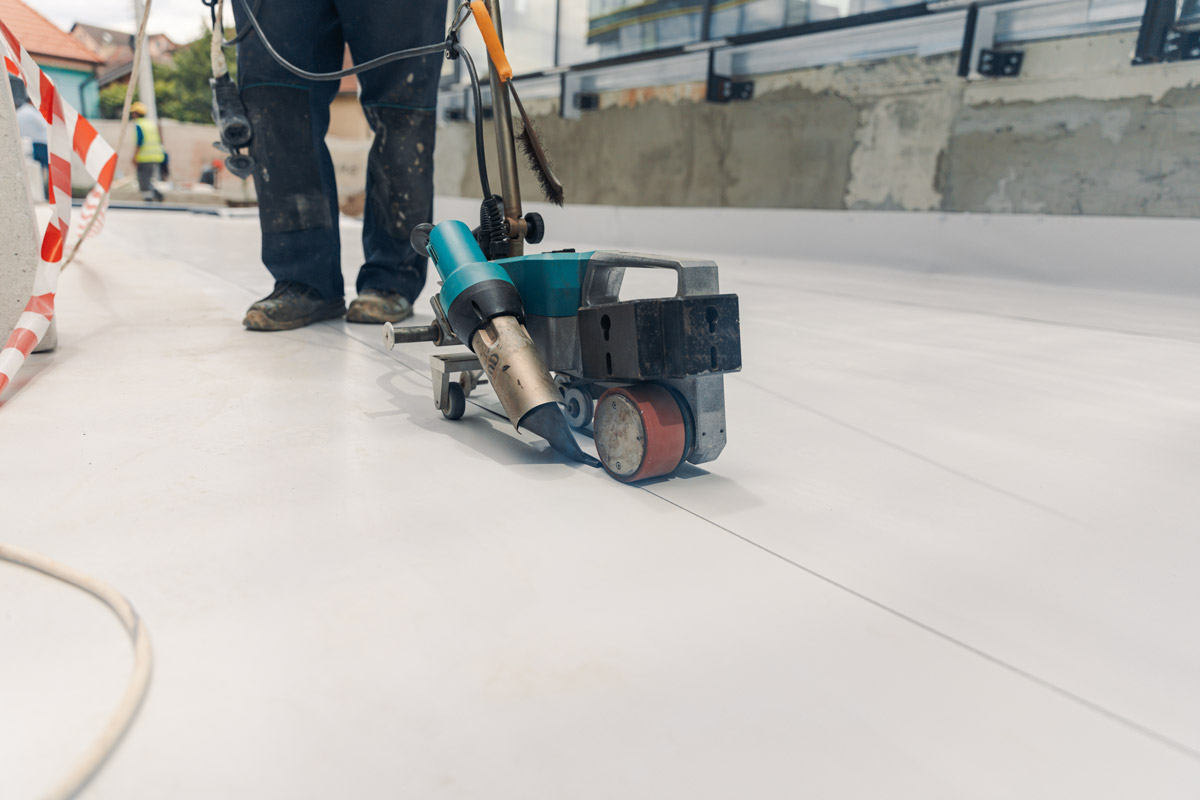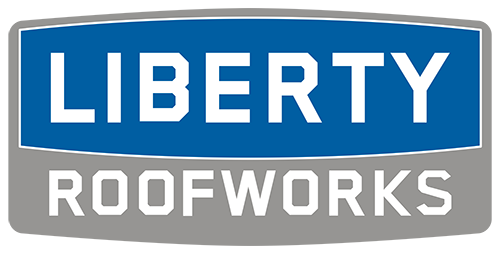The Advantages, Costs, and Everything Else About TPO Roofs
Nowadays, TPO roofing is a widely used roofing material. Despite how common it is, most homeowners have no idea what it is or anything else about it.
If you’re anything like the rest of the population, you’ve come to this page in order to learn what TPO roofing is. We’ve shared this post with everyone so they may learn more because we know how uncomfortable it is to spend your hard-earned money on something you don’t understand.

What Is TPO Roofing?
White, single-ply thermoplastic polyolefin (TPO) membrane is utilized for both residential and commercial roofing. TPO is a white membrane, therefore it reflects heat rather than absorbing it.
TPO is a great choice for keeping the area below cooler if your bedroom has a low-slope dormer or flat roof over it. Additionally, you can use it over a non-living space like a garage or covered patio.
However, if you can see the ceiling from a window, you should think about how the white membrane of TPO seems. The white will become more dirty more quickly if the window is looking across the membrane.
It’s also acceptable if you don’t care how it looks or can’t see the top. It’s just something to keep in mind when making decisions.
Why Is a TPO Roofing Needed?
After learning what TPO roofing is, you should be able to determine why you should use it. The pitch (also known as steepness) of a low slope roof or roof facet is less than 2:12. (or less than two vertical units up in every other 12 horizontal units out).
A flat roof or low slope must be waterproof because water won’t drain from them as quickly as it would on a higher pitch. Asphalt shingles cannot hold standing water, thus you are unable to use them.
This was not created independently by roofers; it is a requirement of the building code. In accordance with building regulations and the installation instructions provided by the shingle manufacturer, asphalt shingles cannot be put on a ceiling with a pitch lower than 2:12.
This is why TPO roofing membranes must be installed on flat or low-slope roofs (or some other flat roof system). Additionally, avoid hiring a roofing contractor who advises shingling your low-slope roof.
Contact Us Today
Liberty Roofworks
1397 Cilantro Ct.,
Tega Cay SC 29708
Monday-Friday | 8am-5pm
(704) 463-8177

What’s the Durability of TPO Roofing?
How durable is TPO roofing? The ROI and when a roof needs to be changed depend on how long it lasts.
Your TPO roofing system can last up to 25 years if built correctly. There is no assurance that it will last the promised 25 years, despite the commitment.
This is true since a variety of elements have an impact on how long a roof will last. These considerations include the surroundings in the area, how much direct sunshine it receives, and the installation’s quality.
However, if the roofers install the TPO membrane roof properly, it will endure a very long period.
What’s the Cost of TPO Roofing?
Any investigation into TPO roofing must take pricing into account. Budget between $14 to $17 per square foot for a single, smaller TPO membrane roofing, and about $12 per square foot for slightly larger projects.
The price of a TPO roof is dependent on a variety of variables, just like other roofing materials. The kind of insulation employed beneath the membrane is another one of these variables.
The cost of using textile insulation and binding the membrane will be more than the cost of using thick enough insulation to insulate the entire building. Another important consideration is the size of the rooftop that will get the membrane.
The cost per square foot for smaller projects will often skew toward the higher end of the cost range, despite the fact that this may appear paradoxical. However, the price per square foot for larger commercial projects is cheaper.

TPO Roofing Advantages
Providing it is installed and maintained correctly, a commercial single-ply system can last 30 years. The following are additional benefits of single-ply membrane installation:
- Customer Choice of Insulation – Because single-ply doesn’t provide the insulation element, you, as a customer, have additional alternatives for insulating your facility’s roof.
- Fire-Rated Class A – EPDM and TPO membranes can gain Underwriters Laboratories fire resistance Class A designations by applying fire-resistant chemicals throughout the manufacturing duration.
- Retentive or Reflective – TPO is a white, highly reflective material. On the other hand, EPDM is frequently referred to as “Black Roofs” because of its naturally dark appearance.

How to Choose a TPO Roof
By choosing the right product and roofing contractor, you can make sure you get the most out of your TPO roof. Keep the following in mind when looking for and building TPO roofing:
Color Range
TPO membranes can satisfy a range of application-specific design criteria. Although these membranes can be grey, white, or black, TPOs are often white.
White TPO membranes offer the greatest advantage for energy conservation. However, for aesthetic or other reasons, you might favor black or gray. The white surface effectively disperses heat and reflects UV radiation.
Thickness and Width
TPO roofing membranes are available in numerous colors, widths, and thicknesses. The TPO product’s manufacturer chooses which thicknesses are offered. More options allow you to choose the type that best suits your application situation (i.e., residential or commercial, climate, etc.).
- Commercial-grade TPO is available in 3 or 12-foot-wide rolls with thicknesses of up to 0.080 inc.
- Residential TPO has a width of 0.045 to 0.060 inches and is available in rolls 6.5 feet in diameter and 100 feet in length.
If your home or commercial building has a low-sloped or flat roof for a variety of reasons, TPO is one of your finest solutions.
TPO roofing, on the other hand, is a recent addition to the market for roofing materials, therefore it’s important to be informed of any potential drawbacks.

TPO Roofing Installation
After the current substrate has been cleaned and ready, the insulation is installed by removing or cleaning the current roof. The facility owner has a variety of insulation choices to consider:
The most common type of roofing insulation, Polyisocyanurate (Polyiso), is more expensive but has a higher R-value score, making it a good investment.
Expanded Polystyrene (EPS) – Because it provides the highest R-value per dollar spent, EPS is used to insulate the entire building, including the roof, walls, and floors. Since EPS is suited for ground contact, it does not gradually absorb water.
Extruded Polystyrene (XPS) is commonly recognized by its green, blue, or pink hue and falls between EPS and Polyiso in terms of price and performance. XPS is semipermeable because its perm value is one.
The TPO covering can mechanically or adhesively attach to the cover board. The roofer returns to use a hot-air gun to weld the joints once the membrane has spread out.
TPO Roof Options
Since its debut, TPO roofing has become a market favorite for use in commercial applications. However, in recent years, its use in residential areas has increased significantly.
This is due, in part, to the TPO’s range of hues, aesthetic appeal, and potential for energy savings. Its adaptability in width and thickness, which enables it to be used in a larger range of applications, is another benefit.
Thickness
The TPO barrier you choose should be wide enough for your specific function (i.e., commercial or residential). The upper side of the TPO membrane will be the thickest in terms of performance and longevity.
Measurements and Calculations
Your roofing company needs to be able to take accurate measurements in order to install a TPO roof effectively. The correct membrane width and fastener spacing must be calculated by the builder in order to assess the likely uplift load on your roof.
Weldability
The highest-grade TPO building supplies have a wide weldability window. This suggests that each TPO strip may connect more consistently at varied temperatures, producing seams that are stronger.
Wide Sheets
For instance, TPO roofing materials may come in broad rolls or sheets. Less gaps will need to be made by your contractor the broader your TPO materials are. As a result, there will be less mechanical connections and joining procedures required, which means the roof will be more resilient, stronger, and easier to install.
TPO is a great option for waterproofing roofs, but it has advantages in other uses as well. Other advantages of TPO roofing membrane include its high level of durability, improved airflow and ventilation, and improved sustainability.
TPO roofing is also an excellent choice for green roofs since it offers a sustainable base for your plants. It’s also a wonderful choice for roofs that need to deflect rainwater.
Products made of TPO are a wise investment for any house or office. You can benefit from TPO membrane for many years if you choose it. So, stop worrying about the long-term expense.
In Charlotte, North Carolina, call us if you need assistance with anything or if you need a TPO roof replacement. We are happy to help homeowners or business owners with their roofing-related problems because we have many years of experience.
If you have any general inquiries concerning Charlotte, North Carolina commercial roofing systems or roofing installation, give us a call right away.
